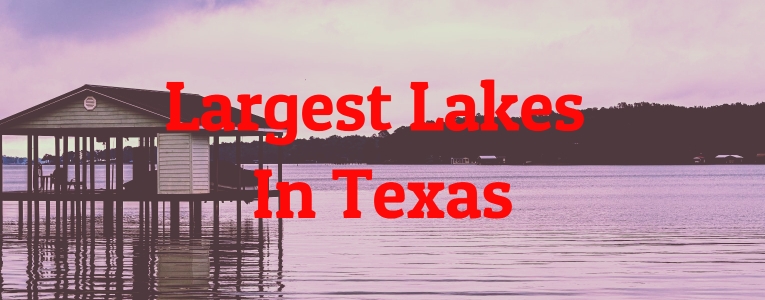Lakes provide leisure, animal habitats, and drinking and irrigation water to the US. Texas, the second-largest state in the US, has several lakes, both natural and man-made, that contribute to its unique biological variety.
Texas is famed for its BBQ and scorching weather, but its hundreds of freshwater lakes may be soothing in the heat. Texas has several man-made lakes ranging from hundreds of hectares to over a hundred thousand acres, providing freshwater fishing and lakeside vacations.
The second-largest state in the US has many rivers, streams, mountains, and plains. However, Texas’ borders do not contain entirely land alone. Texas has beautiful cities, ranches, and abundant marine species in its huge freshwater lakes.
Texas lakes range from tiny to enormous. Damming rivers creates Texas’s largest reservoirs. These reservoirs are popular for boating, fishing, and swimming. Several of these reservoirs provide water to agriculture, industry, and cities around the state. Here are the 8 largest lakes in Texas.
-
Lake Tawakoni
Total Capacity: 926,000 acre⋅feet
Total Surface Area: 37,879 acres
Maximum Depth: 70 feet
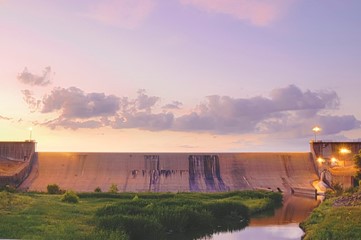 Source: Wikimedia
Source: Wikimedia
The eighth-largest lake in Texas is Lake Tawakoni, a reservoir in Northeast Texas. It spans over 37,879 acres and is situated on the Sabine River Basin. The lake was created in 1960 when the Sabine River Authority constructed a dam on the Sabine River for the purpose of flood control and to provide water for the surrounding areas.
Outdoor enthusiasts enjoy fishing, boating, camping, hiking, and birding at Lake Tawakoni. The lake has catfish, crappie, bass, and sunfish, making it ideal for fishing. Birdwatchers will enjoy seeing bald eagles, ospreys, and great blue herons at the lake.
Lake Tawakoni provides water and pleasure to the surrounding region. Greenville, Terrell, and Forney get their water from the lake. The area is also great for fishing, boating, hiking, or relaxing.
Did You Know?
The lake has various boat ramps and marinas for boaters. Everyone can water ski, jet ski, or cruise the lake. The lake has several lovely locations for kayaking and canoeing.
-
Richland-Chambers Reservoir
Total Capacity: 1,103,816 acre⋅feet
Total Surface Area: 41,356 acres
Maximum Depth: 75 feet
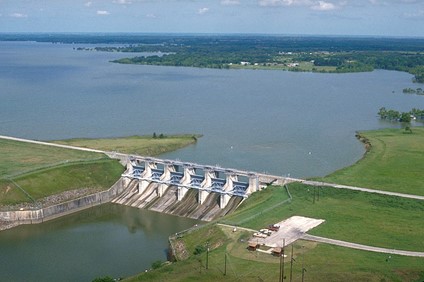 Source: Wikimedia
Source: Wikimedia
The Richland-Chambers Reservoir is a man-made lake in Fort Bend and Brazoria counties, Texas. The Brazos River Authority developed the seventh-largest lake in Texas in 1978 to give water to the expanding population. Boaters, fisherman, and environment lovers enjoy it now.
Outdoor aficionados will love the 1,200-acre Richland-Chambers Reservoir. Fishing is common in the lake’s clear waters. The lake has largemouth bass, catfish, and crappie.
The lake’s urban position makes it easy to reach. Locals and tourists visit it as a day excursion from Houston. Brazos Bend State Park, Stephen F. Austin State Park, and other parks around the reservoir.
Did You Know?
The Richland-Chambers Reservoir provides water to nearby villages as well as pleasure. Almost 2 million Texans drink from the Brazos River watershed, which includes the lake. Industrial, energy, and irrigation utilize the reservoir’s water.
-
Amistad Reservoir
Total Capacity: 5,658,600 acre⋅feet
Total Surface Area: 64,900 acres
Maximum Depth: 220 feet
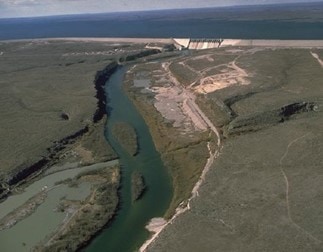 Source: Wikimedia
Source: Wikimedia
Amistad Reservoir in Val Verde County, Texas, is large. It covers around 67,000 acres and has a maximum depth of 217 feet. Boating, fishing, and camping are common at Amistad Reservoir, which supplies drinking water to nearby settlements.
The 1969 Amistad Dam constructed the reservoir. The Rio Grande Dam is part of the US-Mexico border. The International Boundary and Water Commission runs the dam and distributes water equally between the US and Mexico.
Scuba diving and snorkeling are popular in Amistad Reservoir due to its clean waters. The lake has largemouth bass, catfish, and white bass. The lake hosts several fishing contests.
Did You Know?
Many campsites surround Amistad Reservoir for camping. These parks provide RV hookups, showers, and picnic tables. Several campsites have lake and mountain views.
-
Lake Livingston
Total Capacity: 1,750,000 acre⋅feet
Total Surface Area: 83,030 acres
Maximum Depth: 90 feet
 Source: Wikimedia
Source: Wikimedia
Texas’ fifth-largest lake is Lake Livingston in East Texas. It includes 450 kilometers of coastline and 90,000 acres. The Livingston Dam produced the Trinity River lake in 1969. The dam controls floods but is also a favorite recreational spot for Texans and tourists.
Visitors may enjoy several lake activities. Lake Livingston fishing is popular. Catfish, crappie, and bass abound in the lake, drawing fisherman of all abilities. Visitors may take use of marinas and fishing guides.
Lake Livingston is lovely and diversified, with something for everyone. Lake Livingston is a Texas must-see for fishing, water sports, and relaxation.
Did You Know?
Lake Livingston provides water to nearby villages as well as pleasure. The lake supplies water to Houston, Beaumont, Conroe, and numerous smaller communities.
-
Lake Texoma
Total Capacity: 2,525,568 acre⋅feet
Total Surface Area: 89,000 acres
Maximum Depth: 100 feet
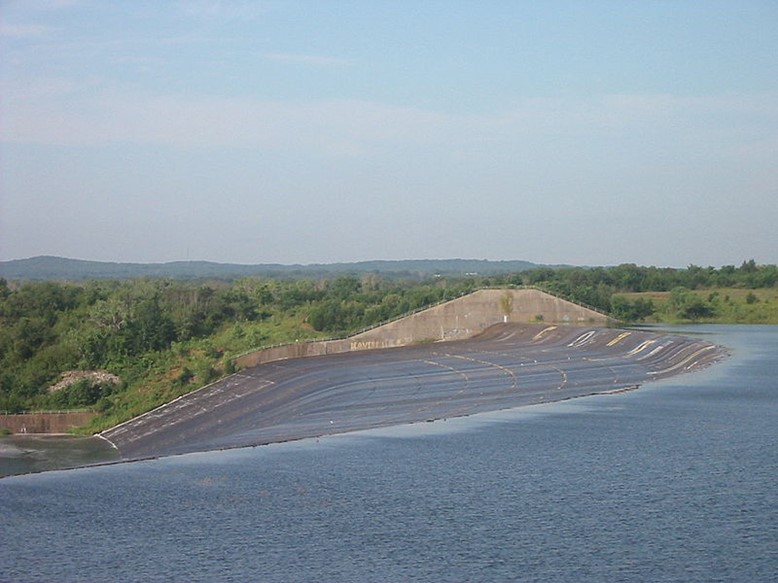 Source: Wikimedia
Source: Wikimedia
Lake Texoma, the fourth-largest lake in Texas, is a famous tourist site on the Oklahoma-Texas border. Visitors from throughout the globe come to this large lake for its beauty, fishing, and enjoyment.
The 1944 Denison Dam on the Red River formed Lake Texoma, which covers 89,000 acres. The Washita and Red Rivers feed the lake, which has nearly 1,200 miles of coastline and many recreational activities.
Anglers of various ability levels visit the lake for its approximately 70 fish species, including striped bass, largemouth bass, catfish, and crappie. The lake hosts several professional fishing contests for striped bass.
Did You Know?
The Cross Timbers Trail, a 14-mile hiking path, is one of the most popular trails in the region and allows hikers the opportunity to observe a variety of animals, including deer, birds, and even the rare bald eagle.
-
Falcon International Reservoir
Total Capacity: 2,993,000 acre-feet
Total Surface Area: 83,654 acres
Maximum Depth: 110 feet
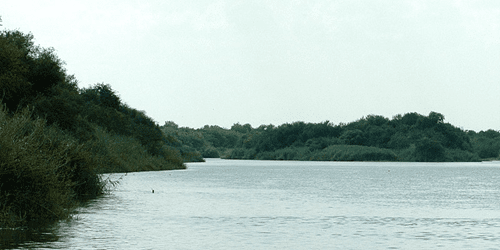 Source: Wikimedia
Source: Wikimedia
South Texas’ third-largest lake is Falcon International Reservoir on the Rio Grande. The 1950s-built reservoir is a popular leisure spot. Falcon Dam, completed between 1950 and 1954 for the Rio Grande Project, generated the reservoir.
The 137-foot-tall, 18,900-foot-long Falcon Dam is impressive. The dam generated a reservoir with a maximum capacity of 2,993,000 acre-feet and an 83,654-acre surface area. The International Boundary and Water Commission manages the Texas-Mexico border reservoir.
Fishing aficionados go to Falcon International Reservoir for largemouth bass, catfish, and crappie. The reservoir has held several fishing events, including the Bassmaster Elite Series and FLW Tour.
Did You Know?
Its expansive waters and diverse recreational opportunities make it a unique and valuable resource for the region.
-
Sam Rayburn Reservoir
Total Capacity: 1,140,500 acre⋅feet
Total Surface Area: 114,500 acres
Maximum Depth: 80 feet
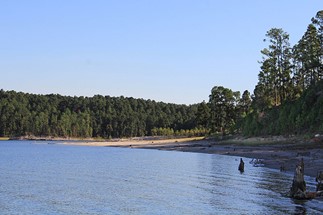 Source: Wikimedia
Source: Wikimedia
Lake Sam Rayburn is a man-made lake in eastern Texas about 15 miles north of Jasper. The second-largest lake in Texas with 114,500 acres and approximately 750 kilometers of coastline. The 1960s Angelina River Sam Rayburn Dam constructed the reservoir.
Outdoor enthusiasts enjoy camping, hiking, and birdwatching at Sam Rayburn Reservoir. Anglers go to the lake for largemouth bass, catfish, crappie, and sunfish.
The lake has several marinas and boat ramps for boating. Jet skis, pontoon boats, and fishing boats may be rented or brought.
The U.S. Army Corps of Engineers manages campsites and day-use areas surrounding Sam Rayburn Reservoir. The reservoir is open year-round, however certain amenities may shut in winter.
Did You Know?
Sam Rayburn Reservoir’s irrigation, flood management, and hydroelectric power production help the region’s economy. The lake hosts fishing, boating, and water sports contests.
-
Toledo Bend Reservoir
Total Capacity: 4,477,000 acre-feet
Total Surface Area: 185,000 acres
Maximum Depth: 110 feet
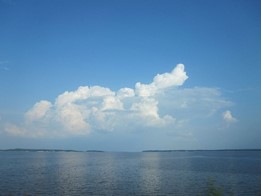 Source: Wikimedia
Source: Wikimedia
Toledo Bend Reservoir is the largest lake in Texas. Located on the Texas-Louisiana border, it has 185,000 acres. The 1960s Sabine River impoundment produced the lake, which is famous for fishing, boating, and outdoor enjoyment.
Toledo Bend Reservoir has several activities besides fishing. The lake has several marinas and boat ramps for boating. Kayaking, canoeing, and jet skiing are among popular lake sports. Visitors may explore the lake’s various coves, inlets, beaches, and picnic sites.
Hiking and bike routes surround the lake for landlubbers. The Sabine National Forest north of the lake has miles of hiking and biking routes. Deer, turkey, and eagles live in the woodland.
Toledo Bend Reservoir also attracts campers. Several lakeside campsites and RV parks include showers, laundry, and playgrounds. Several parks provide cabins and cottages for more pleasant camping.
Did You Know?
The lake has largemouth bass, crappie, catfish, and white bass. The Texas Parks and Wildlife Department stocks the lake and holds fishing events year-round. The lake is one of the top bass fishing places in the nation and has held many big fishing events.
RELATED READINGS
8 Largest Manmade Lakes In The U.S.
10 Largest Freshwater Lakes in the World
